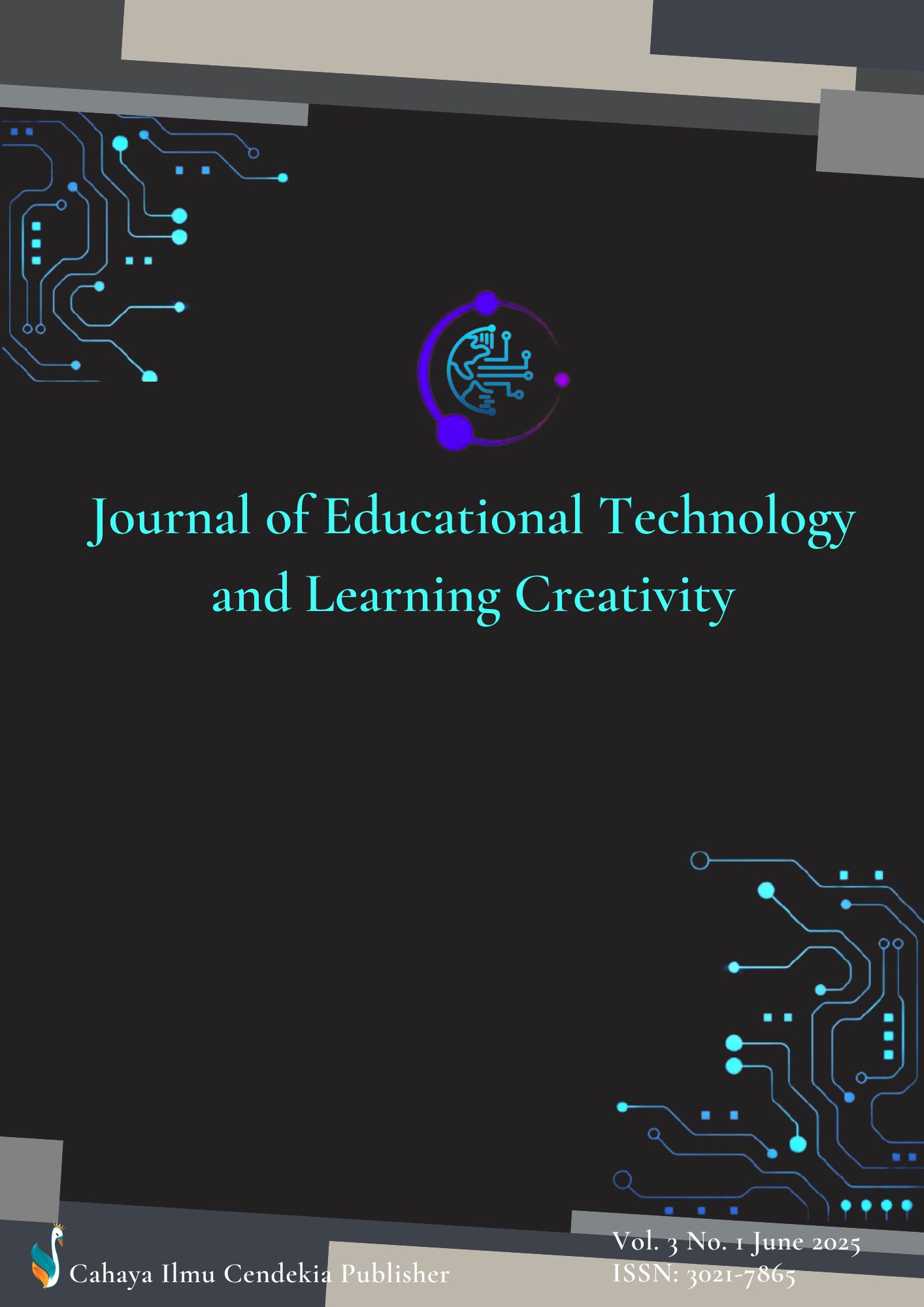Local Resources, Global Impact: Crafting Bioplastics from Salak and Cassava in Indonesia
Abstract
Purpose of the study: The purpose of this study was to determine the effect of adding sorbitol and glycerol on the quality of bioplastics, as well as to determine the right formulation for making bioplastic starch from snake fruit and cassava seeds.
Methodology: The method used was a Completely Randomized Design (CRD) with two factors, namely the addition of the first factor of sorbitol (1, 2, and 3 mL) and the second factor of glycerol addition (1, 2, and 3 mL), each experiment was repeated three times. The data obtained were analyzed using the analysis of variance test at a significant level of 0.05.
Main Findings: The variation in sorbitol and glycerol addition significantly affects the characteristics of bioplastics, as confirmed by a One-Way ANOVA test (sig. < 0.05), indicating distinct differences based on the type and amount of plasticizer used. Optimal formulations for bioplastics made from salak seeds and cassava starch include: highest water resistance (96.19%) with 2 mL sorbitol, optimal thickness (0.33 mm) with 1 mL sorbitol, greatest tensile strength (68.93 kg/cm²) with 2 mL glycerol, and highest elongation (5.88%) with 3 mL glycerol.
Novelty/Originality of this study: This study contributes to the advancement of bioplastic development by utilizing salak seed and cassava starch as novel base materials. The resulting bioplastics offer the potential to serve as environmentally friendly alternatives to conventional plastics, with the key advantage of being biodegradable. This innovation supports efforts to reduce synthetic plastic waste, which is notoriously difficult to decompose.
References
F. A. S. Islam, “The impact of plastic waste on ecosystems and human health and strategies for managing it for a sustainable environment,” Int. J. Latest Technol. Eng. Manag. Appl. Sci., vol. 14, no. 3, pp. 706–723, 2025, doi: 10.51583/IJLTEMAS.
H. Hartatik, A. Purnomo, B. K. Riasti, and H. Munawaroh, “Relationships analysis and public perception of the healthy plastic as one solution to healthy living,” J. Phys. Conf. Ser., vol. 755, no. 1, pp. 3–8, 2017, doi: 10.1088/1742-6596/755/1/011001.
M. H. Rancaputra and T. W. Abadi, “Turning waste into wealth with bricks eco-friendly in Indonesia,” J. Geosci. Environ. Stud., vol. 1, no. 2, pp. 1–12, 2024, doi: 10.53697/ijgaes.v1i2.3344.
V. F. Arijeniwa et al., “Closing the loop: A framework for tackling single-use plastic waste in the food and beverage industry through circular economy- a review,” J. Environ. Manage., vol. 359, no. September 2023, p. 120816, 2024, doi: 10.1016/j.jenvman.2024.120816.
I. D. Ibrahim et al., “Need for sustainable packaging: an overview,” Polymers (Basel)., vol. 14, no. 20, pp. 1–16, 2022, doi: 10.3390/polym14204430.
S. Vadera and S. Khan, “A critical analysis of the rising global demand of plastics and its adverse impact on environmental sustainability,” J. Environ. Pollut. Manag., vol. 3, no. 1, pp. 1–13, 2021, doi: 10.18875/2639-7269.3.105.
T. Dey, “Plastic Mut(e)ability: Limited Promises of Plasticity,” Worldw. Waste, vol. 4, no. 1, pp. 1–11, 2021, doi: 10.5334/wwwj.63.
E. J. Mihardja, S. Komsiah, and D. Harmaningsih, “Campaign ‘bOTAK’ (bogor without plastic bags) as an environmental communication model for reducing plastic waste in marine environment,” IOP Conf. Ser. Earth Environ. Sci., vol. 674, no. 1, pp. 1–8, 2021, doi: 10.1088/1755-1315/674/1/012101.
D. M. Aberg, “Circular plastic consumption in everyday life: a nexus of practice perspective,” Consum. Soc., vol. 4, no. 2, pp. 170–191, 2025, doi: 10.1332/27528499Y2024D000000034.
M. K. Rabiu and M. Jaeger-Erben, “Reducing single-use plastic in everyday social practices: insights from a living lab experiment,” Resour. Conserv. Recycl., vol. 200, no. June 2023, p. 107303, 2024, doi: 10.1016/j.resconrec.2023.107303.
E. Iacovidou et al., “System-wide analysis of the plastics value chain in Indonesia : the five levels of information,” J. Circ. Econ., vol. 3, no. 1, pp. 1–49, 2025.
I. A. Widhiantari and G. N. De Side, “Optimization of physical characteristics of bioplastics from agricultural waste using response surface methodology (RSM),” IOP Conf. Ser. Earth Environ. Sci., vol. 913, no. 1, pp. 1–9, 2021, doi: 10.1088/1755-1315/913/1/012055.
A. D. Macheca et al., “Perspectives on plastic waste management: challenges and possible solutions to ensure its sustainable use,” Recycling, vol. 9, no. 5, pp. 1–66, 2024.
F. C. Mihai et al., “Plastic pollution, waste management issues, and circular economy opportunities in rural communities,” Sustain., vol. 14, no. 1, pp. 1–48, 2022, doi: 10.3390/su14010020.
S. K. Mallick, M. Pramanik, B. Maity, P. Das, and M. Sahana, “Plastic waste footprint in the context ofCOVID-19: Reduction challenges and policy recommendations towards sustainable development goals,” Psychiatry Res., vol. 14(4), no. January, p. 293, 2020.
C. Peng, J. Wang, X. Liu, and L. Wang, “Differences in the Plastispheres of Biodegradable and Non-biodegradable Plastics: A Mini Review,” 2022. doi: 10.3389/fmicb.2022.849147.
T. D. Moshood, G. Nawanir, F. Mahmud, F. Mohamad, M. H. Ahmad, and A. AbdulGhani, “Sustainability of biodegradable plastics: New problem or solution to solve the global plastic pollution?,” Curr. Res. Green Sustain. Chem., vol. 5, no. November 2021, 2022, doi: 10.1016/j.crgsc.2022.100273.
T. D. Moshood, G. Nawanir, F. Mahmud, F. Mohamad, M. H. Ahmad, and A. AbdulGhani, “Biodegradable plastic applications towards sustainability: a recent innovations in the green product,” Clean. Eng. Technol., vol. 6, pp. 1–14, 2022, doi: 10.1016/j.clet.2022.100404.
Maskun, H. Kamaruddin, F. Pattitingi, H. Assidiq, S. N. Bachril, and N. H. Al Mukarramah, “Plastic waste management in indonesia: current legal approaches and future perspectives,” Hasanuddin Law Rev., vol. 9, no. 1, pp. 106–125, 2023, doi: 10.20956/halrev.v9i1.3683.
H. Kamaruddin, Maskun, F. Patittingi, H. Assidiq, S. N. Bachril, and N. H. Al Mukarramah, “Legal aspect of plastic waste management in Indonesia and Malaysia: addressing marine plastic debris,” Sustain., vol. 14, no. 12, pp. 1–17, 2022, doi: 10.3390/su14126985.
C. Chomariyah and I. D. Rafiqi, “The Indonesian legal framework to mitigate marine plastic debris,” Indones. Law Reform J., vol. 4, no. 1, pp. 1–14, 2024, doi: 10.22219/ilrej.v4i1.32110.
F. A. Cahyani, B. P. M. Jaya, and D. Wijaya, “Marine waste management policy as an effort to prevent environmental pollution and sustainability of marine ecosystems: Indonesia perspective,” J. Leg., vol. 16, no. 2, pp. 217–233, 2023, doi: 10.33756/jelta.v16i2.21158.
F. A. Cahyani, B. P. M. Jaya, and D. Wijaya, “Human Rights and Justice: Marine Waste Management for Environmental Protection and Ecosystem Sustainability in Indonesia,” J. Leg., vol. 16, no. 2, pp. 217–233, 2023.
E. Tan, N. F. Jaafar, S. H. Aileen Tan, and N. B. Mohd Zanuri, “A review of plastic and microplastic pollution towards the Malaysian marine environment,” IOP Conf. Ser. Earth Environ. Sci., vol. 1013, no. 1, pp. 1–17, 2022, doi: 10.1088/1755-1315/1013/1/012012.
R. Kumar et al., “Impacts of plastic pollution on ecosystem services, sustainable development goals, and need to focus on circular economy and policy interventions,” 2021. doi: 10.3390/su13179963.
Z. Kilic, “Water Pollution: Causes, Negative Effects and Prevention Methods,” İstanbul Sabahattin Zaim Üniversitesi Fen Bilim. Enstitüsü Derg., vol. 3, no. 2, pp. 129–132, 2021, doi: 10.47769/izufbed.862679.
S. Dey, G. T. N. Veerendra, P. S. S. A. Babu, A. V. P. Manoj, and K. Nagarjuna, Degradation of Plastics Waste and Its Effects on Biological Ecosystems: A Scientific Analysis and Comprehensive Review, vol. 2, no. 1. Springer US, 2024. doi: 10.1007/s44174-023-00085-w.
R. R. Chandran, B. I. Thomson, A. J. Natishah, J. Mary, and V. Nachiyar, “Nanotechnology in Plastic Degradation,” Biosci. Biotechnol. Res. Asia, vol. 20, no. 1, pp. 53–68, 2023, doi: 10.13005/bbra/3068.
A. R. Shafqat, M. Hussain, Y. Nawab, M. Ashraf, S. Ahmad, and G. Batool, “Circularity in materials: a review on polymer composites made from agriculture and textile waste,” Int. J. Polym. Sci., vol. 2023, pp. 1–21, 2023, doi: 10.1155/2023/5872605.
D. A. Ferreira-Filipe, A. Paço, A. C. Duarte, T. Rocha-Santos, and A. L. P. Silva, “Are biobased plastics green alternatives?—a critical review,” Int. J. Environ. Res. Public Health, vol. 18, no. 15, pp. 1–16, 2021, doi: 10.3390/ijerph18157729.
A. Z. Naser, I. Deiab, and B. M. Darras, “Poly(lactic acid) (PLA) and polyhydroxyalkanoates (PHAs), green alternatives to petroleum-based plastics: a review,” RSC Adv., vol. 11, no. 28, pp. 17151–17196, 2021, doi: 10.1039/d1ra02390j.
G. Coppola, M. T. Gaudio, C. G. Lopresto, V. Calabro, S. Curcio, and S. Chakraborty, “Bioplastic from renewable biomass: a facile solution for a greener environment,” Earth Syst. Environ., vol. 5, no. 2, pp. 231–251, 2021, doi: 10.1007/s41748-021-00208-7.
N. I. Ibrahim, F. S. Shahar, M. T. H. Sultan, A. U. M. Shah, S. N. A. Safri, and M. H. mat Yazik, “Overview of bioplastic introduction and its applications in product packaging,” Ellis Isl. Snow Globe, vol. 11, no. 1423, pp. 207–238, 2021, doi: 10.2307/j.ctv11cw45p.12.
M. M. Abe et al., “Advantages and disadvantages of bioplastics production from starch and lignocellulosic components,” Polymers (Basel)., vol. 13, no. 15, pp. 1–25, 2021, doi: 10.3390/polym13152484.
N. George, A. Debroy, S. Bhat, S. Singh, and S. Bindal, “Biowaste to bioplastics: An ecofriendly approach for a sustainable future,” J. Appl. Biotechnol. Reports, vol. 8, no. 3, pp. 221–233, 2021, doi: 10.30491/jabr.2021.259403.1318.
R. Anugrahwidya, B. Armynah, and D. Tahir, “Bioplastics starch-based with additional fiber and nanoparticle: characteristics and biodegradation performance: a review,” J. Polym. Environ., vol. 29, no. 11, pp. 3459–3476, 2021, doi: 10.1007/s10924-021-02152-z.
S. Sufia, T. Santoso, S. Aminah, and S. Rahmawati, “Effectiveness of purification used cooking oil using adsorbents : activated charcoal seeds salak (Salacca zalacca ),” J. Akad. Kim., vol. 12, no. 4, pp. 247–253, 2023, doi: 10.22487/j24775185.2023.v12.i4.pp247-253.
I. D. Rahmani, U. Sarofa, and S. Winarti, “Effect of salak seed flour ( Salacca edulis ) and tapioca flour addition on the quality of chicken meatballs,” Asian J. Appl. Res. Community Dev. Empower., vol. 9, no. 2, pp. 1–7, 2025.
O. M. Abel, S. Chinelo, and R. Chidioka, “Enhancing cassava peels starch as feedstock for biodegradable plastic,” J. Mater. Environemntal Sci., vol. 12, no. 02, pp. 169–182, 2021.
W. Abotbina et al., “Recent developments in cassava (Manihot esculenta) based biocomposites and their potential industrial applications: a comprehensive review,” Materials (Basel)., vol. 15, no. 19, pp. 1–41, 2022, doi: 10.3390/ma15196992.
A. Lilavanichakul and R. Yoksan, “Development of bioplastics from cassava toward the sustainability of cassava value chain in Thailand,” Sustain., vol. 15, no. 20, pp. 1–21, 2023, doi: 10.3390/su152014713.
P. Kongsil et al., “Cassava breeding and cultivation challenges in thailand: past, present, and future perspectives,” 2024. doi: 10.3390/plants13141899.
C. A. Saputri, F. A. Julyatmojo, Harmiansyah, M. Febrina, M. Mahardika, and S. Maulana, “Characteristics of bioplastics prepared from cassava starch reinforced with banana bunch cellulose at various concentrations,” IOP Conf. Ser. Earth Environ. Sci., vol. 1309, no. 1, 2024, doi: 10.1088/1755-1315/1309/1/012006.
G. V. Blancia, “4 the potential of mango starch and snake plant fibers as bio-plastic,” Pelagia Res. Libr. Asian J. Plant Sci. Res., vol. 2021, no. 5, pp. 171–175, 2021.
U. Tisngati, N. Indra Meifiani, D. Cahyani Nur Apriyani, and Martini, “Four factors experiments for fixed models in completely randomized design,” J. Phys. Conf. Ser., vol. 1175, no. 1, pp. 1–10, 2019, doi: 10.1088/1742-6596/1175/1/012152.
M. J. Sideq and S. A. S. Al-Temimi, “Using fractional factorial experiments 2 ( 5-1 ) in complete randomized block design to study the factors affecting the acidity of yoghurt,” Rev. Int. Geogr. Educ., vol. 11, no. 9, pp. 1007–1019, 2021, doi: 10.48047/rigeo.11.09.86.
M. M. Harussani, S. M. Sapuan, A. H. M. Firdaus, Y. A. El-Badry, E. E. Hussein, and Z. M. El-Bahy, “Determination of the tensile properties and biodegradability of cornstarch-based biopolymers plasticized with sorbitol and glycerol,” Polymers (Basel)., vol. 13, no. 21, pp. 1–12, 2021, doi: 10.3390/polym13213709.
M. D. Arief, A. S. Mubarak, and D. Y. Pujiastuti, “The concentration of sorbitol on bioplastic cellulose based carrageenan waste on biodegradability and mechanical properties bioplastic,” in IOP Conference Series: Earth and Environmental Science, 2021, pp. 1–7. doi: 10.1088/1755-1315/679/1/012013.
M. Alonso-González, M. Felix, and A. Romero, “Influence of the plasticizer on rice bran-based eco-friendly bioplastics obtained by injection moulding,” Ind. Crops Prod., vol. 180, no. November 2021, pp. 1–9, 2022, doi: 10.1016/j.indcrop.2022.114767.
M. A. Budiman, Uju, and K. Tarman, “A review on the difference of physical and mechanical properties of bioplastic from seaweed hydrocolloids with various plasticizers,” in IOP Conference Series: Earth and Environmental Science, 2022, pp. 1–16. doi: 10.1088/1755-1315/967/1/012012.
A. A. B. A. Mohammed et al., “Effect of various plasticizers in different concentrations on physical, thermal, mechanical, and structural properties of wheat starch-based films,” Polymers (Basel)., vol. 15, no. 1, pp. 1–20, 2023, doi: 10.3390/polym15010063.
Y. Wu et al., “Enhancing starch−based packaging materials: optimization of plasticizers and process parameters,” Materials (Basel)., vol. 16, no. 17, pp. 1–19, 2023, doi: 10.3390/ma16175953.
Copyright (c) 2025 Benida Yesika, Yazan Al-jilani, Esmond Agurgo Balfour, Caroline Kachana Pwamang

This work is licensed under a Creative Commons Attribution 4.0 International License.
Authors who publish with this journal agree to the following terms:
- Authors retain copyright and acknowledge that the Journal of Educational Technology and Learning Creativity is the first publisher licensed under a Creative Commons Attribution 4.0 International License.
- Authors are able to enter into separate, additional contractual arrangements for the non-exclusive distribution of the journal's published version of the work (e.g., post it to an institutional repository or publish it in a book), with an acknowledgment of its initial publication in this journal.
- Authors are permitted and encouraged to post their work online (e.g., in institutional repositories or on their website) prior to and during the submission process, as it can lead to productive exchanges and earlier and greater citation of published work.


.png)


.png)
.png)
.png)












